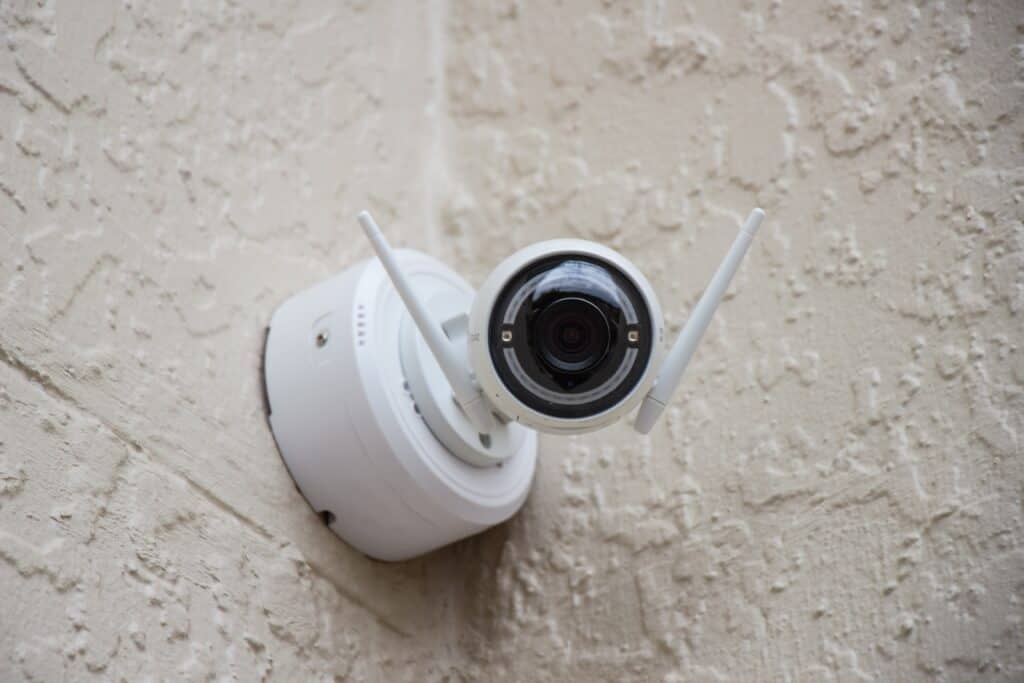Churches offer a sense of peace and provide a communal space for worshippers to gather. However, recent events have highlighted the need to ensure proper security measures are in place to maintain the safety of church members and visitors. Proactive steps can help safeguard against potential threats and reduce the likelihood of security incidents in these sacred spaces.
One of the key aspects of proactive security is developing a comprehensive plan that addresses both physical and cyber threats. By creating, regularly evaluating, and updating these plans, church leaders can build a strong security foundation that promotes a safe and welcoming environment. This involves a combination of risk assessment, training for staff and volunteers, and implementing appropriate security measures tailored to the unique needs of each church community.
Partnering with security experts and collaborating with local law enforcement agencies can further strengthen a church’s ability to prevent and respond to potential security incidents. Through sustained efforts, religious institutions can continue to serve as the spiritual and social hubs that so many rely on while providing a secure environment for their congregations.
Establishing a Church Security Team
Roles and Responsibilities
A church security team plays a crucial role in maintaining the safety and well-being of the congregation. The team’s primary responsibilities include developing and implementing a security plan, conducting regular risk assessments, and responding to security incidents. It is essential for team members to be vigilant and well-trained to handle various situations, ranging from minor conflicts to severe emergencies.
Recruiting and Training Volunteers
To establish a church security team, start by recruiting like-minded individuals who are committed to the safety of the church and its members. Ideal candidates are current or retired law enforcement officers, firefighters, emergency medical professionals, and military veterans. Nevertheless, other volunteers may also have a strong desire to serve and protect their church community.
After assembling the team, provide comprehensive training on various security topics such as conflict resolution, first aid, building security, and emergency response procedures. Ongoing training and refresher courses should also be conducted to ensure the team remains updated and prepared for potential incidents.
Collaboration with Law Enforcement
A successful church security plan should include close collaboration with local law enforcement agencies. Sharing information and seeking guidance from law enforcement will help the security team stay informed about potential threats and improve its overall response capabilities. Furthermore, building a strong relationship with law enforcement will enhance communication and assistance during an emergency.
In conclusion, establishing a church security team is a vital step for ensuring the safety of churches and their members. By defining roles and responsibilities, recruiting and training dedicated volunteers, and fostering collaboration with law enforcement, a church can effectively prevent and respond to security incidents.
Managing Potential Threats
Identifying Common Risks
To ensure the safety of a church community, it is crucial to be aware of potential threats that may arise. Common risks may include active shooter scenarios, health issues, accidents, natural disasters, and even acts of targeted violence from hate groups. By understanding these risks, it becomes easier to develop proactive measures that can prevent security incidents.
Developing an Emergency Response Protocol
An effective emergency response protocol is essential in managing potential threats. This should involve thorough planning and coordination among the church leadership, staff, and volunteers. The protocol must outline roles and responsibilities in the event of an emergency and put in place clear procedures for dealing with specific incidents, like an active shooter or medical emergency. Regular drills and training should be conducted to ensure that everyone is familiar with the protocol and prepared to act swiftly during an actual emergency.
Communicating with Congregation
Transparent communication with the congregation is another essential aspect of managing potential threats. Informing churchgoers about the emergency response protocol, along with offering educational resources on how to recognize and respond to potential threats, can contribute to a safer community overall. Furthermore, fostering an environment of open communication allows church members to report any suspicious activity or concerns, allowing for a more proactive approach to security.
Implementing Security Measures
To prevent security incidents at church, it is essential to implement proactive measures that enhance the safety of the premises. This section covers three primary sub-sections: Physical Security Solutions, Access Control Systems, and Video Surveillance.
Physical Security Solutions
Physical security solutions play a crucial role in safeguarding church premises. These measures may include:
- Fences and barriers: Secure the perimeter with fences or barriers to deter unauthorized entry.
- Lighting: Adequate lighting improves visibility and can deter potential intruders.
- Alarm systems: Installing alarm systems effectively alerts authorities when unauthorized access is detected, ensuring quick response times.
- Locks and doors: Use high-quality locks and doors to prevent unauthorized entry and access to restricted areas.
Access Control Systems
Access control systems regulate who can enter specific areas within the church by granting or denying access based on predefined criteria. These systems can help reduce unauthorized access by:
- Using key cards or biometric scanners: This technology ensures access is granted only to authorized individuals.
- Implementing a visitor management system: This system keeps track of who has entered the church and can help identify potential security threats.
- Maintaining a security personnel presence: Having trained security personnel can help monitor and respond to potential security incidents quickly.
- Creating designated access zones: Establish zones within the church premises for different activities or age groups, making it easier to monitor access and ensure safety.
Video Surveillance
Video surveillance provides an extra layer of security by recording events within the church, serving as a valuable tool for both deterrence and evidence. Consider these factors when implementing video surveillance:
- Camera placement: Strategically place cameras around the property to cover high-traffic areas like entrances, exits, and parking lots.
- Video storage: Invest in an appropriate video storage solution, such as cloud storage or external hard drives, to archive the footage for potential future use.
- Remote monitoring capabilities: Having remote monitoring capabilities allows for real-time viewing by security personnel or church staff, enabling a quick reaction to any potential threats.
- System maintenance: Regularly maintain the video surveillance system, ensuring all components are functioning correctly and up to date.
Preparing for Emergencies
Fire Safety and Evacuation Procedures
It is crucial for churches to have a comprehensive fire safety and evacuation plan in place. This includes installing fire alarms, extinguishers, and sprinklers throughout the building. Ensure that all church staff and volunteers are trained on how to use firefighting equipment and are familiar with emergency exit routes. Regularly conduct fire drills to help everyone become comfortable with the evacuation process. Consider posting clear, visible signs indicating evacuation routes, emergency exits, and fire-extinguisher locations.
First Aid and Medical Response
Having a well-equipped first aid kit and trained personnel is essential for handling medical emergencies. Ensure that church members who have medical expertise (such as nurses or physicians) are identified and can be easily located in the congregation. Additionally, it is beneficial to offer first aid trainings and classes for staff and volunteers so they can provide assistance during emergencies. Churches should consider investing in an Automated External Defibrillator (AED) and offering regular training sessions on its proper use.
Addressing Liability Concerns
With the growing awareness of security incidents in places of worship, it is crucial to address potential liability concerns. This involves obtaining adequate insurance coverage for different types of emergencies, such as fire or personal injury. Make sure that the church’s insurance policy sufficiently covers potential damages and medical expenses. Establishing safety protocols and adhering to local building codes can help minimize the risk of accidents, thus decreasing liability exposure.
In order to maintain a secure environment for worship and other activities, it is essential to be proactive by considering fire safety, medical response, and liability concerns as part of a comprehensive emergency preparedness plan.
Engaging Church Members and Staff
Involving Leadership and Oversight Board
To ensure the security of the church, it’s crucial to involve the leadership and oversight board in the process of creating and implementing security measures. This includes conducting background checks on staff and volunteers, especially those who will interact with children and vulnerable individuals. By involving the leadership, the decision-making process regarding the necessary safety measures, ranging from surveillance system installations to emergency evacuation plans, becomes more efficient and effective.
Promoting a Buy-In Culture
Creating a culture within the church that esteems safety and security is essential in preventing potential incidents. Promoting a buy-in culture means encouraging open communication between members, staff, and the church’s security team. This collaborative effort makes it easier for the church to identify potential security threats, create awareness, and develop a comprehensive security plan. Some ways to promote a buy-in culture include conducting regular safety drills, discussing security concerns during staff meetings, and having dedicated channels for reporting suspicious activities or risks.
Educating on Safety Measures
To further prevent security incidents at church, it’s vital to educate church members and staff on safety measures. This can be done through various forms of training, such as teaching staff and volunteers how to follow established protocols, how to respond to emergencies with prepared emergency scripts, and ensuring everyone understands the importance of keeping the church doors locked when necessary.
By providing adequate education and training on safety measures, church members and staff become more confident and knowledgeable in their roles. This empowers them to contribute proactively towards maintaining a safe and secure environment for everyone within the church community.
Special Considerations

Child Safety and Protection
Ensuring the safety of children within the church is a top priority. Implement access control measures to separate childcare areas from the main congregation space. Background checks should be conducted for all staff and volunteers working in the childcare areas. Additionally, consider implementing a check-in/check-out process for children attending the church, with a system in place to match children to their authorized guardians.
Parking Lot and Exterior Security
The parking lot and exterior of the church are important areas to secure. Regularly monitor and maintain the exterior, ensuring there is adequate lighting and eliminating potential hiding spots. Consider deploying security cameras and designated security personnel to patrol the area during church activities, ensuring people feel safe at all times.
| Key Measures | Description |
|---|---|
| Lighting | Ensure proper illumination in parking lots and exterior paths |
| Security Cameras | Monitor key areas around the church |
| Security Personnel | Assign staff or volunteers to patrol the parking lot and exterior |
Small Church Security Challenges
Small churches may face unique security challenges due to their limited resources. It is crucial to prioritize security measures that are cost-effective but still provide a secure environment. Create a security plan that identifies potential risks, and train staff and volunteers to respond to specific scenarios. Implement simple measures such as locking unused doors, controlling access to sensitive areas, and encouraging members to be vigilant and report suspicious activities.
Frequently Asked Questions
What are the essential elements of a church security plan?
A comprehensive church security plan consists of an oversight board, safety and security measures, vulnerability assessments, and emergency preparedness. The oversight board ensures the security plan aligns with the church’s mission, while regular assessments help identify potential risks and vulnerabilities. Emergency preparedness includes having response and recovery plans in place for various situations.
How can a church security team effectively respond to potential threats?
An effective church security team should be trained to assess and respond to potential threats. They should be familiar with risk assessments, understand the likelihood and severity of various threats, and know the appropriate response to each threat. Regular training and communication can help the team stay informed and prepared for potential security incidents.
What training is required for church security personnel?
Training for church security personnel should cover risk assessment, threat identification, effective communication, and emergency response procedures. Some church security teams also undergo additional specialized training based on the specific needs of their congregation, such as medical emergencies or active shooter situations.
How can churches improve safety for their congregation and staff?
Improving safety for a church’s congregation and staff involves regular review and updating of risk assessments, implementing preventive measures, and providing safety training and protocols to staff and volunteers. Addressing potential hazards and keeping the facilities well-maintained can also contribute to a safer environment.
What are the best practices for assessing and addressing vulnerabilities in church facilities?
Assessing and addressing church facilities’ vulnerabilities involves conducting thorough security assessments that consider safety, security, and emergency preparedness. Regular inspections and reviews can help identify risks and enable the church to adapt its prevention measures accordingly. Engaging with local law enforcement, emergency services, and other community partners can support these efforts.
How can regular communication and collaboration enhance church security?
Regular communication and collaboration among church leadership, security teams, staff, and volunteers can enhance church security by maintaining a proactive approach to safety and security measures. Open dialogue, information sharing, and training opportunities help everyone stay up-to-date on possible threats and response protocols, contributing to a more secure and prepared church community.








